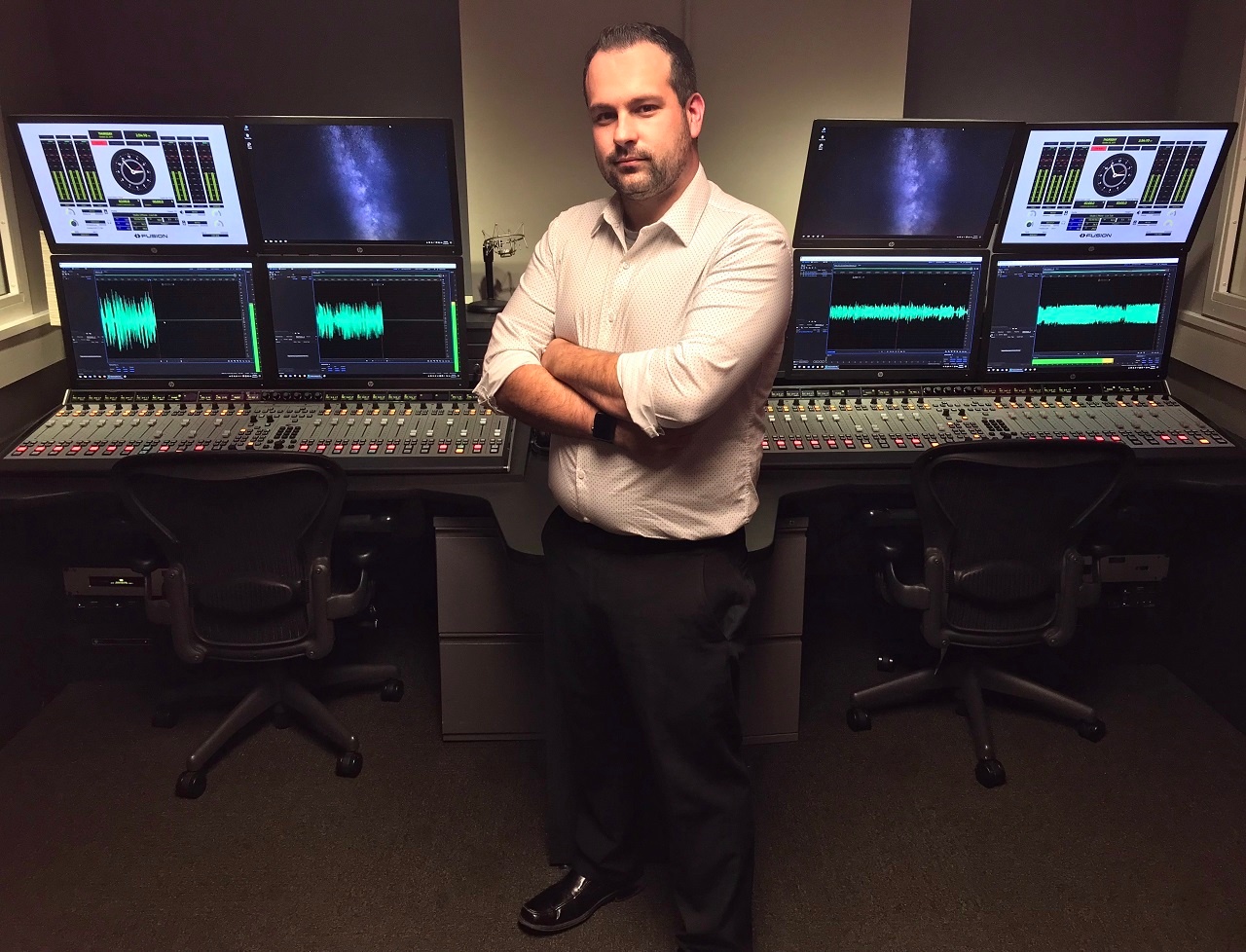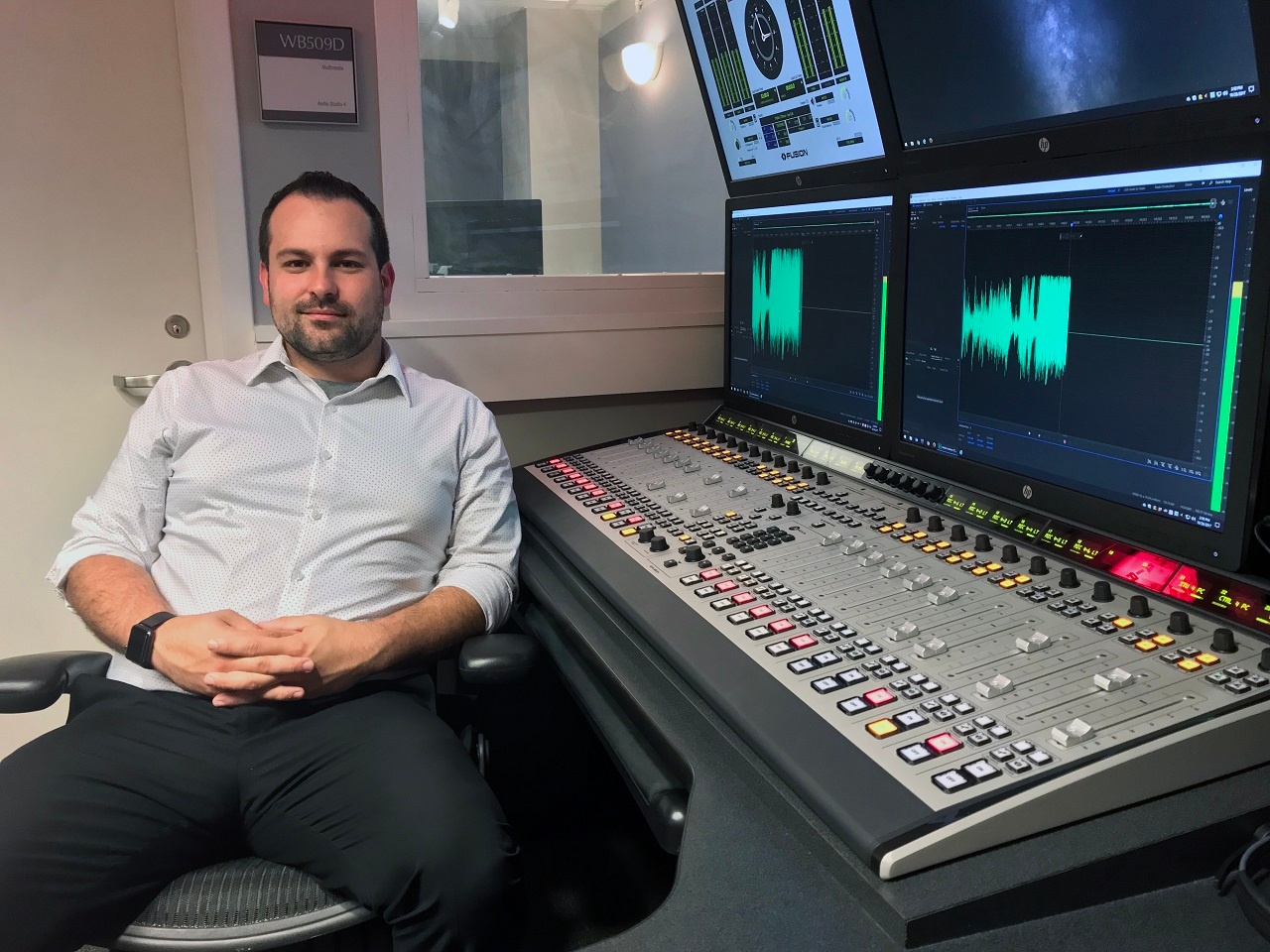Axia Helps Johns Hopkins' Remote Learning Students Shine | Telos Alliance
By The Telos Alliance Team on Jan 17, 2018 11:25:00 AM
Axia Helps Johns Hopkins' Remote Learning Students Shine
Every now and then, we come across a unique implementation of our gear outside the realm of broadcast. One such installation can be found at Johns Hopkins University in Baltimore, one of the premier medical schools in the U.S., where the Bloomberg School of Public Health uses four full Axia studios for their online learning program. Dom DeLauney, Online Learning Production Supervisor, explains how an elite medical school came to require four audio studios full of Axia gear.
“About six years ago, we moved into a much larger space than we had before. One purpose for the space is lecture recording; professors come in to record lectures. But what we use it mainly for is our "Live Talk" sessions. Faculty and guests record live in the studio, and the students join the sessions remotely.” Dom says the setup is a benefit over traditional online learning classes, as students can ask questions in real time, versus posting questions to a discussion forum and waiting for the professor to read it and respond.
 |
| Johns Hopkins' Online Learning Production Supervisor Dom DeLauney uses Axia Fusion consoles for live remote learning at the School of Public Health. |
Dom says making the move to Axia from their original setup presented few hurdles, and actually made things far simpler for his tech crew. “We had a makeshift system before. We had limited resources and we had to make it work, and it worked for what it was. But with Axia, it was such an easy transition, and the improvement was huge.” Previously John Hopkins had two remote studios, but with the upgrade to Axia, the facility now boasts four studios and is capable of hosting 24 people talking at a time for multiple classes, increasing the capacity by leaps and bounds.
Not only was it a smooth transition for Dom, but a smooth installation for Telos Alliance & Axia Support Engineer Jeff McGinley, despite it being at a non-broadcast facility. “There were some challenges, because they use the consoles in a production environment more than a broadcast environment. Even though the consoles are designed for a broadcast environment, we were able to make everything work the way they wanted it to."
"We had a very makeshift system before. We had very limited resources and we had to make it work, and it worked for what it was. But with Axia, it was such an easy transition, and the improvement was huge."—Dom DeLauney, Online Learning Production Supervisor, Johns Hopkins University
The new setup, which originally used Axia Element consoles, worked out so well that Dom and his team recently decided to upgrade to Fusion consoles. Jeff says as a result, they’ve got more hardware resources, so are able to unlock some additional features they weren’t able to use originally.
One of those features is talk back. “During live sessions, the speaker is able to talk back to one of the techs listening in during live sessions. That’s been a really cool improvement. People are really stoked about that,” says Dom.
Another area where Axia technology has been a big plus is in reducing calls for support. “We’ve got students listening in from third world countries who don’t have great Internet connections,” Dom says. “When somebody is listening remotely and they don’t hear anything before the session starts, they may think their Internet is down. So we have a channel strictly for music and every session starts and ends with music. It seems simple, but it alleviates a lot of messages.” He notes that some classes are attended by hundreds of students, so if one tech gets 50 messages requesting support, that takes a lot of resources. Being able to play music eliminates that concernc completely.
Dom adds that the refreshed look of the Fusion enhances the studios as well. “Aesthetics play a role in it. It’s a good-looking board.”
 |
| Dom relaxes behind the Fusion console between live sessions. During live sessions, speakers are able to talk back to support techs listening in. |
In addition, Dom says the support his team has received from Axia has been excellent. “We deal with lots of different equipment. Aside from this audio studio I’m running, we have a video studio as well. There are lots of different vendors, and there is no level of support as there is with Axia. I can call Jeff and within 10 minutes he’s got an answer for me. It’s crazy. Even when he’s traveling. Being able to have that kind of support has made the transition smooth.”
"There are lots of different vendors, and there is no level of support as there is with Axia. I can call Jeff and within 10 minutes he’s got an answer for me. It’s crazy."—Dom DeLauney, Online Learning Production Supervisor, Johns Hopkins University
While it’s unique for Johns Hopkins to have an audio facility at all, some may think four studios is overkill. But Dom says they’re always busy, and demand for the online sessions is high. “When I started here about seven years ago we did about 250 live talks a year. In 2016 we did over 700, and in 2017 over 900. Our studios are constantly running. We have 2,300 students from nearly 80 countries coming to the School of Public Health, and a lot of them are attending virtually and getting their MPH online.”
He adds that it’s important the university ensures remote students get the same education as those on campus, because they’re paying the same amount. “We use technology to give our online students the same opportunity, and a lot of this is thanks to Axia’s ability to handle all these sessions simultaneously in a pseudo-broadcast environment.”
Dom stresses the importance of the program to the school's overall mission. “The mission of the school is protecting health and saving lives. These professors and researchers do amazing work. And they can do that work, but where they maybe lack a little is getting that message out there and making sure everybody knows about it. So being able to have a facility like this where we can easily get that message out is huge.”
Dom insists it’s part of the reason why Johns Hopkins’ Bloomberg School is the top School of Public Health in the world. “Part of the job is understanding how this stuff works, but the other part of it is keeping up with technology to make us stay at number one. That’s the thing. We’re the number one School of Public Health. What we need to do is find new ways to remain at the top, and a lot of that has to do with technology and support from my group. That’s pretty cool.”
Further Reading
For more exciting Axia Fusion installations, check out these stories:
Telos Alliance has led the audio industry’s innovation in Broadcast Audio, Digital Mixing & Mastering, Audio Processors & Compression, Broadcast Mixing Consoles, Audio Interfaces, AoIP & VoIP for over three decades. The Telos Alliance family of products include Telos® Systems, Omnia® Audio, Axia® Audio, Linear Acoustic®, 25-Seven® Systems, Minnetonka™ Audio and Jünger Audio. Covering all ranges of Audio Applications for Radio & Television from Telos Infinity IP Intercom Systems, Jünger Audio AIXpressor Audio Processor, Omnia 11 Radio Processors, Axia Networked Quasar Broadcast Mixing Consoles and Linear Acoustic AMS Audio Quality Loudness Monitoring and 25-Seven TVC-15 Watermark Analyzer & Monitor. Telos Alliance offers audio solutions for any and every Radio, Television, Live Events, Podcast & Live Streaming Studio With Telos Alliance “Broadcast Without Limits.”
Recent Posts
Subscribe
If you love broadcast audio, you'll love Telos Alliance's newsletter. Get it delivered to your inbox by subscribing below!